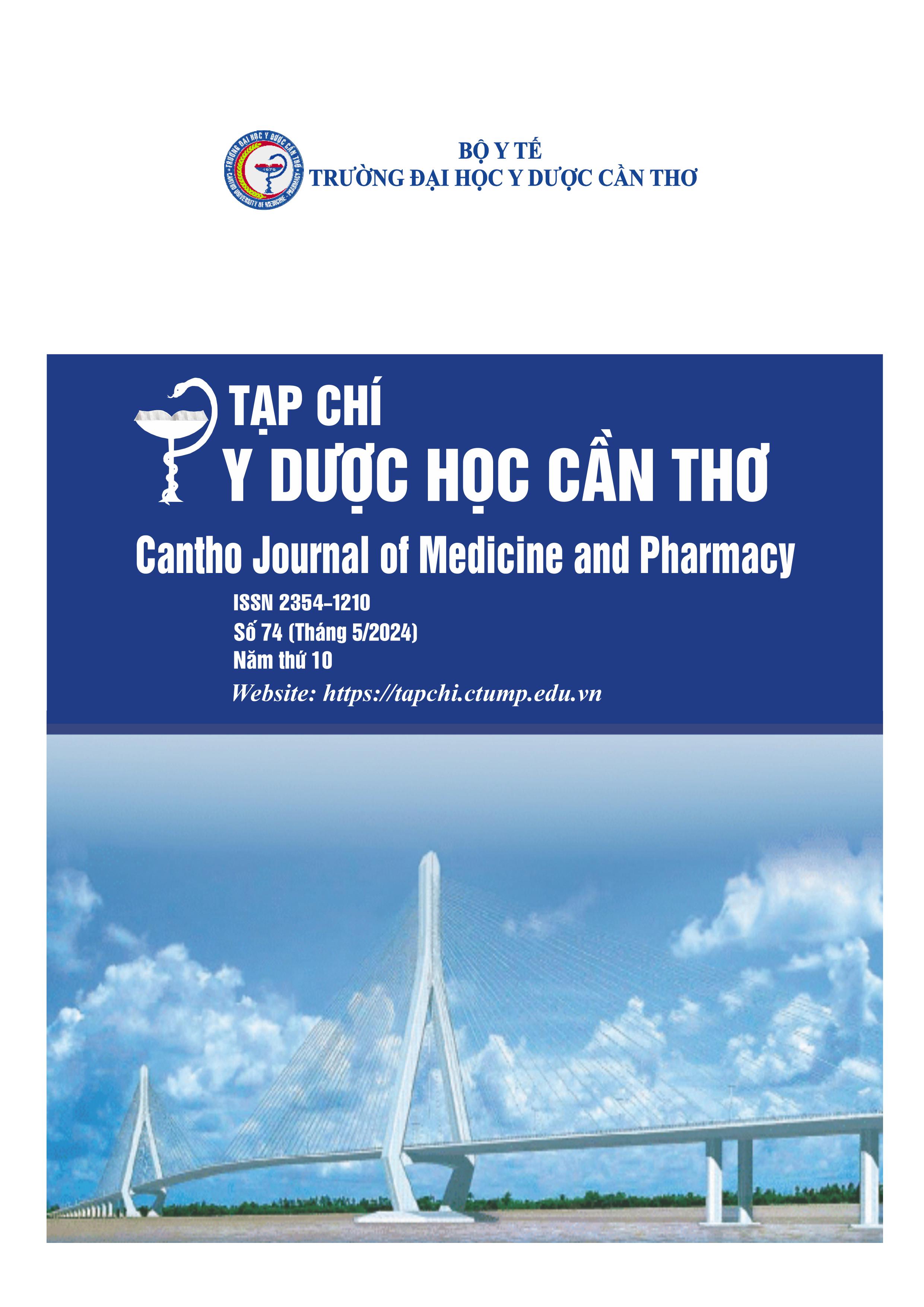NGHIÊN CỨU ĐẶC ĐIỂM HÌNH ẢNH VÀ GIÁ TRỊ CỦA CỘNG HƯỞNG TỪ MẠCH MÁU TOF 3D 3.0TESLA TRONG CHẨN ĐOÁN HẸP TẮC ĐỘNG MẠCH LỚN TRONG SỌ Ở BỆNH NHÂN NHỒI MÁU NÃO CẤP TẠI BỆNH VIỆN ĐA KHOA QUỐC TẾ S.I.S CẦN THƠ NĂM 2022 – 2024
Nội dung chính của bài viết
Tóm tắt
Đặt vấn đề: Đột quỵ thiếu máu não cục bộ cấp tính hay nhồi máu não cấp tính là tình trạng dòng máu đột ngột không lưu thông đến một khu vực của não làm mất chức năng thần kinh tương ứng, có nguy cơ tử vong cao. Nhờ sự tiến bộ của kỹ thuật hình ảnh cộng hưởng từ đã giúp nhanh chóng chẩn đoán nhồi máu não và định hướng điều trị cho bệnh nhân. Mục tiêu nghiên cứu: Mô tả đặc điểm hình ảnh trên cộng hưởng từ 3Tesla của bệnh nhân nhồi máu não cấp có hẹp tắc động mạch lớn trong sọ và xác định giá trị của cộng hưởng từ mạch máu TOF 3D 3Tesla trong chẩn đoán hẹp tắc động mạch lớn trong sọ. Đối tượng và phương pháp nghiên cứu: Nghiên cứu mô tả cắt ngang có phân tích trên 62 bệnh nhân nhồi máu não cấp có hẹp tắc động mạch trong sọ được chụp MRI 3Tesla và chụp mạch máu não số hóa xóa nền tại Bệnh viện Đa khoa Quốc tế S.I.S Cần Thơ từ tháng 07/2022 đến tháng 04/2024. Kết quả: Nghiên cứu ghi nhận 62 trường hợp phù hợp làm đối tượng nghiên cứu (37 nam và 25 nữ), tuổi trung bình chung cả 2 giới là 61,26 ± 15,46. Tỷ lệ các mức độ hẹp động mạch lớn trong sọ ghi nhận là 6,9% hẹp nhẹ, 15,2% hẹp trung bình, 27,5% hẹp nặng và 50,4% tắc hoàn toàn. Giá trị của MRA TOF 3D 3T trong đánh giá mức độ hẹp động mạch lớn trong sọ có độ nhạy, độ đặc hiệu và độ chính xác cao với mức hẹp 50-99% lần lượt là 94,0%, 99,1% và 98,9% và mức độ tắc là 94,0%, 99,7% và 99,3%. Kết luận: Cộng hưởng từ 3Tesla giúp chẩn đoán nhanh chóng, chính xác nhồi máu não và phát hiện hẹp tắc động mạch trong sọ, định hướng cho việc điều trị tiếp theo.
Chi tiết bài viết
Từ khóa
Nhồi máu não, Hẹp động mạch trong sọ, MRI 3Tesla, DSA
Tài liệu tham khảo
2. Goldstein L.B., Jones M.R., Matchar D.B., Edwards L.J., Hoff J., et al. Improving the reliability of stroke subgroup classification using the Trial of ORG 10172 in Acute Stroke Treatment (TOAST) criteria. Stroke. 2001. 32(5), 1091-1097, https://doi.org/10.1161/01.str.32.5.1091.
3. Chimowitz M.I., Lynn M.J., Howlett-Smith H., Stern B.J., Hertzberg V.S., et al. Comparison of warfarin and aspirin for symptomatic intracranial arterial stenosis. New England Journal of Medicine. 2005. 352.(13), 1305-1316, https://doi.org/ 10.1056/NEJMoa043033.
4. Ferguson G.G., Eliasziw M., Barr H.W., Clagett G. P., Barnes R.W., et al. The North American symptomatic carotid endarterectomy trial: surgical results in 1415 patients. Stroke. 1999. 30(9), 1751-1758, https://doi.org/10.1161/01.STR.30.9.1751.
5. Lê Đình Toàn. Nghiên cứu đặc điểm lâm sàng, hình ảnh vữa xơ hẹp tắc động mạch trong sọ trên phim cộng hưởng từ 3.0 Tesla ở bệnh nhân nhồi máu não. Luận án tiến sĩ Y học. Viện nghiên cứu Khoa học Y dược lâm sàng 108 Hà Nội; 2016.
6. Lê Đức Hinh. Nghiên cứu thực trạng bệnh nhân sau tai biến mạch máu não một năm tại cộng đồng. Hội nghị khoa học lần thứ 6. 2006. 193 - 199.
7. Nguyễn Thị Thanh Mai, Nguyễn Huy Ngọc, Nguyễn Hồng Quân và Nguyễn Văn Thông. Đặc điểm lâm sàng và hình ảnh học các bệnh nhân nhồi máu não cấp có hẹp động mạch trong và ngoài sọ tại Bệnh viện Đa khoa tỉnh Phú Thọ. Tạp chí Y-Dược lâm sàng 108. 2021. 16(8), 8499, https://doi.org/10.52389/ydls.v16i8.962.
8. Wang Y., Zhao X., Liu L., Soo Y.O., Pu Y., et al. Prevalence and Outcomes of Symptomatic Intracranial Large Artery Stenoses and Occlusions in China: The Chinese Intracranial Atherosclerosis (CICAS) Study. Stroke. 2014. 45(3), 663-669, https://doi.org/10.1161/strokeaha.113.003508.
9. Choi C.G., Lee D.H., Lee J.H., Pyun H.W., Kang D.W., et al. Detection of Intracranial Atherosclerotic Steno-Occlusive Disease with 3D Time-of-Flight Magnetic Resonance Angiography with Sensitivity Encoding at 3T. American Journal of Neuroradiology. 2007. 28(3), 439-446.
10. Oelerich M., Lentschig M.G., Zunker P., Reimer P., Rummeny E. J., et al. Intracranial vascular stenosis and occlusion: comparison of 3D time-of-flight and 3D phase-contrast MR angiography. Neuroradiology. 1998. 40(9), 567- 573, https://doi.org/10.1007/s002340050645.


